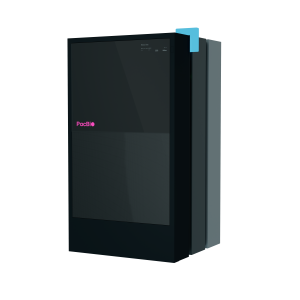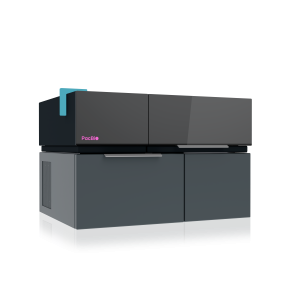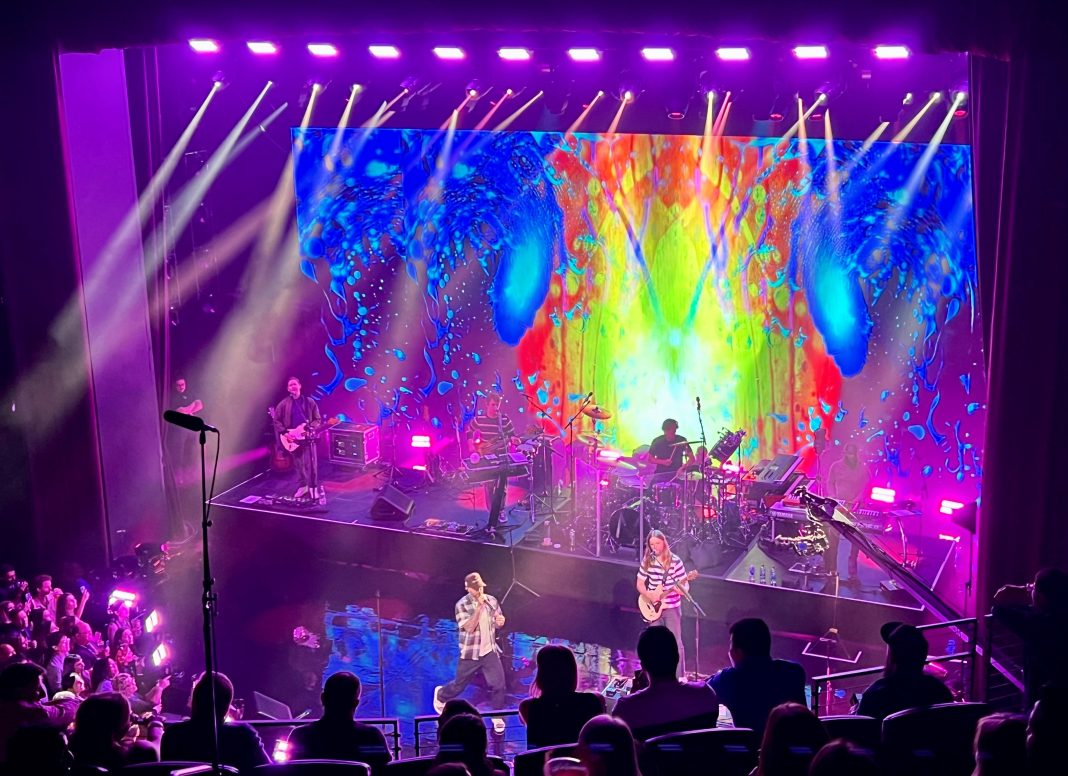There have been enough next-generation sequencing (NGS) launches this year—both products and companies—to make even genomics’ aficionados heads spin. However, Pacific Biosciences (PacBio)—known for its high accuracy, long read, expensive sequencing—has remained relatively quiet. Until now.
At the American Society of Human Genetics (ASHG) conference being held this week in Los Angeles, PacBio made an announcement that, as their CEO Christian Henry told GEN, is “the biggest jump forward in the company’s history.” And the launch party on Tuesday night added to the fanfare, complete with a performance by Maroon 5, who were chosen over Katy Perry, John Mayer, and Bruno Mars. (To Henry’s dismay, Coldplay was out of PacBio’s budget.)
During the event, PacBio announced the launch of not one, but two, new instruments. First, a short-read instrument named “Onso,” which adds a new dimension to their current long-read offerings. The anticipation for this news started last year when PacBio acquired the company Omniome, and their short-read technology—sequencing by binding (SBB.) Although highly anticipated, Onso’s launch was not a surprise.

The bigger surprise (and perhaps bigger splash) came from the launch of a new long-read platform, Revio, which will replace their current workhorse—the Sequel IIe. The Revio, PacBio says, is 15x more powerful than the current Sequel IIe system. It uses the same Hi-Fi chemistry which is very high accuracy and allows for direct methylation detection and structural variation detection. The new platform moves PacBio into population-scale genomics at under a $1,000 genome.
The Revio will become available for sale when Maroon 5 walks off the stage and will start shipping in the first quarter of next year. The platforms were not on display on the stage because, as Henry told GEN (laughing) they didn’t want Maroon 5 to break them.
The difference between the old and new instruments lies in a redesigned SMRT Cell. Revio’s SMRT Cell is three times as dense as the eight million SMRT Cell in the Sequel IIe, with 25 million zero-mode waveguides, which allows looking at more single molecules simultaneously on the chip. But the Revio also allows for the use of four of those chips independently, but simultaneously (meaning that the runs are not truly independent of each other.) In total, the instrument can run one hundred million zero-mode waveguides (or one hundred million single molecules of DNA) simultaneously.
Revio’s runs are 20% faster, Henry says, than the Sequel IIe (24 hours versus 30 hours.) It will, notes Henry, be high throughput enough to make it feasible for modest-sized labs to do 10,000 or 20,000 sample projects. Today, that’s not possible on the Sequel IIe. Right now, the Sequel IIe can do 50 to 60 human genomes a year; Revio will scale that to 1,300 genomes a year.
Revio, which is the exact same size as the Sequel IIE, lists for $779,000. And Sequel IIe buyers who purchased in 2022 will be eligible for a discount. Consumables are priced at $995 a genome. One thing that hasn’t changed between the Revio and the Sequel IIE is the read length. It remains around 15–20 kb.

As for the Onso, it lists for $259,000 and has 500 million reads. The two primary kits are paired 150 reads and single-ended 200 reads. But they are also launching kits to adapt all of the existing libraries (Illumina libraries) to the Onso. The Beta trial is starting this week with the Broad Institute, Cornell Weill School of Medicine, and Corteva Biosciences. For customers, the Onso will start shipping in the first half of next year.
Why would someone buy the Onso over Element’s AVITI, Singular’s G40, or Illumina’s NextSeq? Traditionally, PacBio’s customers have wanted two things: high accuracy and longer reads. And they are willing to pay for them. PacBio has never been for people who need to sequence on a budget. But the Onso may change that. At $259K, the platform sits at a very competitive price point with the same accuracy. More accurate sequencing means less sequencing, which is cost effective.
Henry says, with PacBio, “you can look telomere to telomere and see things that Illumina can’t see. It’s the same with the AVITI or Singular. No one is going to be able to see from telomere to telomere of the short-read players. They just can’t. The math won’t let them do it. The fundamental sequencing won’t let them do it.”
The company also announced a move to GPUs, with six Nvidia GPUs on the system. Henry says that this allows the Revio to process all the data in real-time and not have to do any offline processing. In addition, the company announced a partnership with Google Health to leverage their deep consensus algorithms integrated into the system. Henry says that they are the “first product ever to integrate Google Health directly into the sequencer.”
And the company is following the sustainability trend started by Illumina earlier this month, by cutting their consumables by half. In another environmentally friendly move, they have eliminated the nitrogen requirements for their sequencing. (The Sequel IIe runs nitrogen constantly to protect the DNA.) But the new flow cell design in the SMRT Cell eliminates the need for it.
ASHG is not, historically, a meeting where NGS companies launch new technologies. That is usually reserved for JP Morgan, or the Advances in Genome Biology and Technology (AGBT) meeting. But it was clear from attending the PacBio sessions during AGBT this past June that the products weren’t ready for launch. Another option would have been to host their own meeting, like Illumina did earlier this month at the Illumina Genomics Forum. But Henry says that they didn’t want to take that route (he obviously has strong opinions, but, leaves them aside.) And ASHG made more sense to them than JP Morgan because human genetics is the future of the company. All of the action, Henry says, is in human clinical applications and pushing innovation in human genetics.
Henry (an Illumina veteran) says that both the Revio and Onso are “best of breed” in what they do. And with PacBio’s infrastructure, supply chain, and service and support, he thinks that they have “a real good shot of very significant growth over the next few years.” But, given the flood of options that customers have been given over the past year, time will tell how good their shot is.



